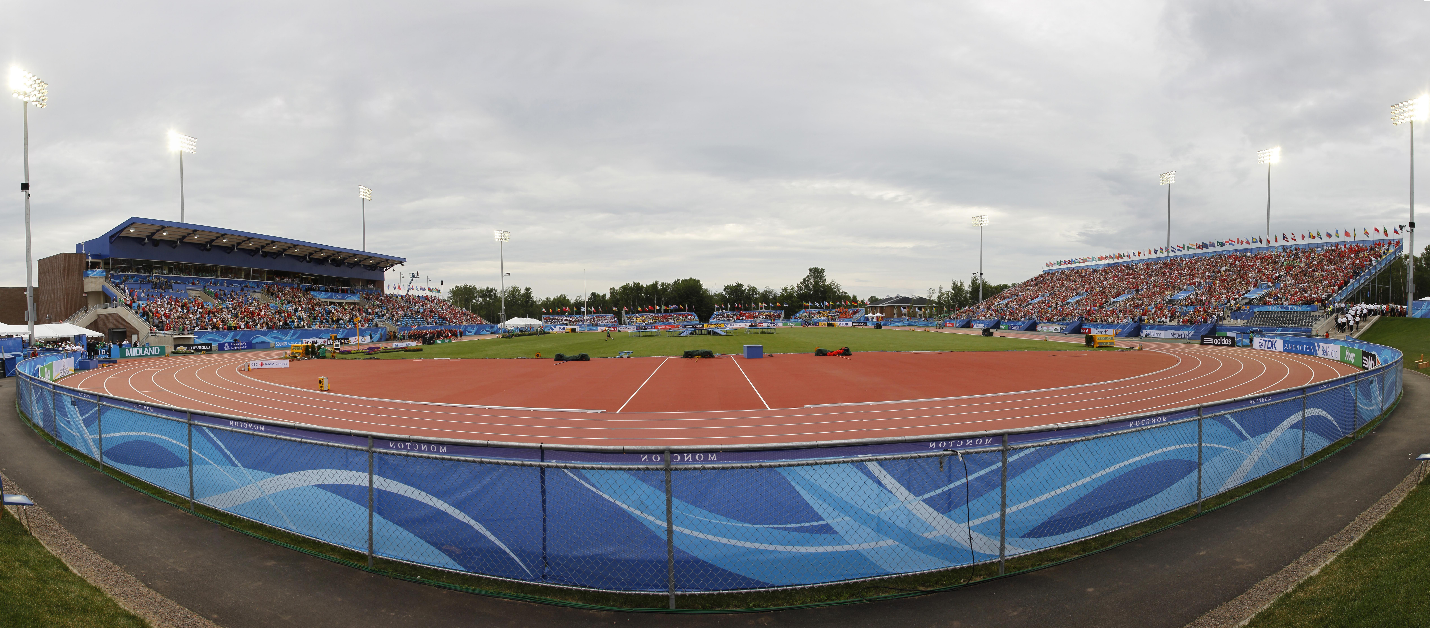Building a World Class Stadium
The City of Moncton’s former Director of Municipal Facilities for Parks and Leisure Services recalls one of his career highlights - building the 2010 Croix Bleue Medavie Stadium

Courtesy of the Times & Transcript
When Bruce Tait recalls one of the most arduous jobs of his career, he cannot help but smile.
The former Director of Municipal Facilities of Moncton’s Parks and Leisure Services even laughs when he remembers scrambling to make frantic final checks on Moncton’s brand new $23-million Croix Bleue Medavie Stadium, barely before the first race of the IAAF World Junior track and field championship in July 2010.
“I think we finished the Stadium 35 minutes before the first athletes of the championship arrived,” he said.
Watching the international event would be the reward of a long and fruitful project Tait had first undertaken two and a half years prior, back when he still knew little about track and field.
In the fall of 2007, Tait’s good friend and next-door neighbour Ian Fowler – the late, acclaimed community development officer who played an instrumental role in bringing the 2010 championship to Moncton – had asked Tait to take a leading role in the building of the Stadium.
Tait figured that erecting a world-class venue would be no small task, but Fowler’s outstanding mentorship and support made him happy to oblige.
So in the dead of Winter ‘07, Tait hired a team of builders and engineers under Acadian Construction and went to work. They teared down trees and ruffage on the woodsy Northwest acres of the Université de Moncton campus. Then, on the newly vacant lot,they installed aluminum bleachers and trademark blue and yellow seats, and laid down the base layer of the track. Next, they built the concrete pieces of the Stadium around those bleachers, and built walkways to connect the structure to the University’s CEPS.
After that came the specifics.
“Since this was an international event,” said Tait, “it was important we meet the needs of the IAAF, like building a warmup track, a javelin practice area, and a shotput circle. Then there was the track itself.”
The Federation had called for Moncton to use sport-flooring company Mondo’s new Track SX model. Its 13mm-deep carpet, designed to optimize energy return, had been touted at the Beijing Olympics. Moncton would be the first Canadian city to test out the new technology.
As the Stadium’s opening date approached, new projects seemed to multiply.
“The IAAF was very pointy with what they wanted,” said Tait, “you run into unforeseen, funny things you have to do.”
The track had to be polished and scrubbed down professionally by a team of cleaners from Switzerland, the infield grass had to be painted multiple times to reach the right shade of green, and routine fire safety checks had to be made around the stadium. High stress levels around the track was becoming second nature.
“We had people working long hours,” said Tait. “One of our staff members had left from his 12-hour shift for his home in Bouctouche, and just as he pulled into his driveway, I was calling him to come back for another eight.”
Throughout the preparations, Tait was guided by Eric Savard, an international events management consultant from Montreal. Savard’s company had consulted for all Canadian IAAF championships since 1988, which had most recently included the senior world championship in Edmonton in 2001, and the world youth championship in Sherbrooke in 2003, where a 16-year-old Usain Bolt ran away with the 200m final.
Savard said that, still now, he considers Moncton’s stadium to be state of the art.
“What continues to stand out about it are three things,” he said. “Its capacity for hosting large events, its flexibility for hosting various types of those events, and, of course, the appearance. When you look at the Stadium from its North gates and overlook the track, there is an undeniable WOW factor.”
To Tait’s relief, that WOW factor came on full display just before the top junior athletes made it to New Brunswick. The track was perfectly coloured, a hulking 60 by 18 feet flat screen broadcasted stats and results, and 200 flat screens and 25 stationary cameras punctuated the arena. Then-IAAF president Lamine Diack, among other officials, said he was impressed with the venue.
Still today, Tait, now a track and field dad, is reminded of the adrenaline he felt in the months before the championship every time he takes his daughter to the Stadium.
“The legacy it left for the community made the 16-hour work days worth it,” he said. “And besides, they are great memories. We didn’t just go to work - for a while, this was our lives.”
This is the fourth of a series of articles revisiting the 2010 IAAF World Junior Championship in Moncton, NB, by Alex Cyr for Athletics New Brunswick.Cyr is a journalist from Prince Edward Island who has written for The Globe and Mail, The XC, and Canadian Running Magazine. His first book, Runners of the Nish, was published in 2018.
